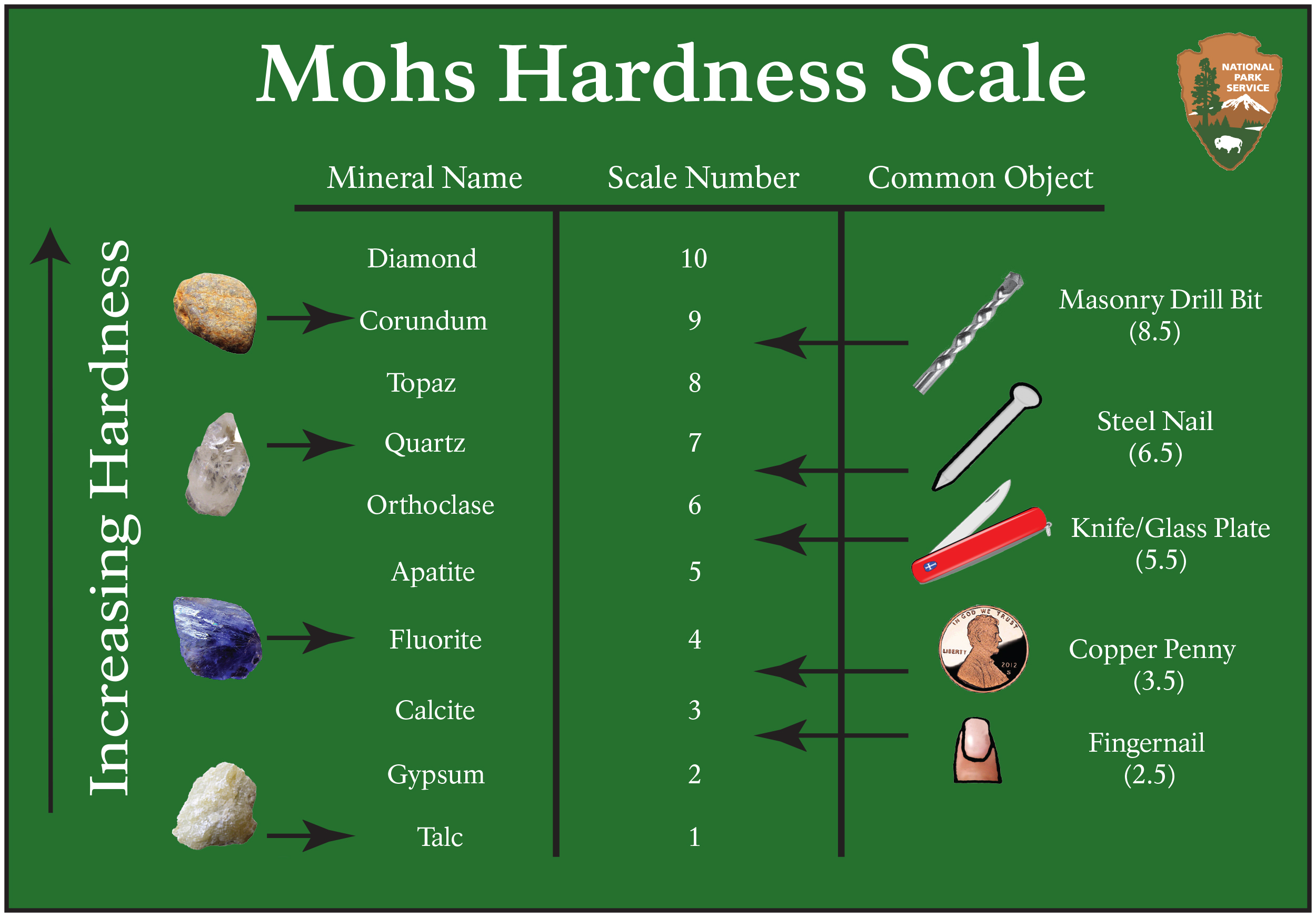Understanding the Mohs' Hardness Scale
Share
Have you ever wondered how minerals are ranked in terms of hardness? The Mohs' Hardness Scale is an important tool used by geologists, jewelers, and mineralogists, and material scientists of all sorts to determine the hardness of various minerals and rocks. Let's delve into the details of this scale and understand how it works.
What is the Mohs' Hardness Scale?
The Mohs' Hardness Scale, developed by Friedrich Mohs in 1812, is a relative scale that ranks minerals based on their scratch resistance to each other. The scale ranges from 1 (the softest) to 10 (the hardest), with each mineral being able to scratch all minerals with a lower ranking.
How does the Mohs' Hardness Scale work?
The concept behind the Mohs' Hardness Scale is simple yet effective. If a mineral can scratch another mineral, it is deemed harder. For example, a mineral with a hardness of 5 can scratch a mineral with a hardness of 4 but not a mineral with a hardness of 6.

Why is the Mohs' Hardness Scale important?
Understanding the hardness of minerals is crucial in various industries. For example, in the jewelry industry, knowing the hardness of gemstones helps determine their durability and suitability for certain types of jewelry. In geology, the scale is used to identify minerals and rocks based on their hardness characteristics. Agate, a type of quartz formation, has a hardness of ~7 on the Mohs' scale, and makes excellent cabochons for jewelry or display pieces. Jasper, a common term for microcrystalline quartz rocks is also very durable, with a similar hardness to agate. Jasper cabochons often feature beautiful 'picture' like patterns and can make great statement pieces - Leopard Skin Jasper is one of my personal favorites!
It's also a handy tool for the relative hardness of any material, as you can see in the right side of the image above from the National Park Service.
Key takeaways from the Mohs' Hardness Scale
Here are some key points to remember about the Mohs' Hardness Scale:
- 1. Talc is the softest mineral on the scale, while diamond is the hardest.
- 2. The scale is based on the ability of one mineral to scratch another.
- 3. The scale is a valuable tool in identifying and categorizing minerals, rocks, and other materials based on their hardness.
Next time you come something wonder about its hardness, remember the Mohs' Hardness Scale and its significance in the world of geology and mineralogy.
